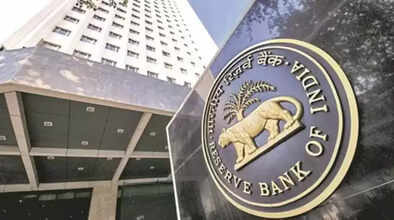RBI Update: What is the new RBI rule that will make it easier to take a loan from a bank against gold and silver?

The Reserve Bank of India (RBI) has issued new directives to banks, including those related to interest rates, lending against gold and silver, and capital regulation.
These will be effective from October 1, 2025. The central bank has also released draft guidelines for public comments on gold metal loans, large risks, intergroup transactions, and loan information reporting.
In an official statement on Monday, the RBI said, "The RBI has today issued seven directives/circulars proposing amendments to certain existing directives/circulars applicable to banks and other regulated entities."
The guidelines state that the rules for floating rate loans have been revised under the Reserve Bank of India (Interest Rate on Advances) (Amendment Directions), 2025.
Currently, floating rate retail and SME loans are linked to an external benchmark, where banks are allowed to set a spread.
Except for the credit risk premium, these spreads can be changed only once every three years.
According to the new rules, banks can now reduce spread components for borrowers within three years to benefit borrowers. Furthermore, instead of being mandatory, providing an option to switch to a fixed rate at the time of revaluation in EMI-based personal loans will be at the banks' discretion.
The RBI stated, "Banks may reduce other spread components before three years for the benefit of the borrower; banks may, at their discretion, provide an option to switch to a fixed rate at the time of revaluation."
Regarding loans against gold and silver, the Reserve Bank of India (Loans Against Gold and Silver - First Amendment Directions), 2025, extends the earlier arrangement under which such loans were permitted only to jewelers.
Now, borrowers using gold as raw material in manufacturing or industrial processing will also be eligible. Like scheduled commercial banks, Tier 3 and Tier 4 urban cooperative banks have also been permitted to provide such loans.
The Reserve Bank of India (Basel III Capital Regulations - Sustainable Debt Instruments in Additional Tier 1 Capital - Eligible Limits for Instruments Denominated in Foreign Currency/Rupee-Denominated Bonds Abroad) Directions, 2025 have also been notified.
These continue to provide the framework for scheduled commercial banks, excluding regional rural banks.
In addition to these three mandatory directions, which will come into effect from October 1, 2025, the Reserve Bank of India has also issued four draft guidelines for public feedback.
The draft Gold Loan (GML) Directions, 2025, proposes to increase the maximum repayment period for jewellery manufacturers from the current 180 days to 270 days. It is also proposed to allow GML for domestic non-manufacturers that outsource jewellery production.
Another amendment is the draft amendment to the guidelines on Large Exposure Framework (LEF) and Intragroup Transactions and Risk Management (ITE), which clarifies the prudential treatment of exposures of Indian branches of foreign banks to their headquarters, provides credit risk mitigation benefits, and links ITE limits to Tier-1 capital instead of paid-up capital and reserves.
Furthermore, under the draft Credit Information Reporting (First Amendment) Directions, 2025, credit institutions may be required to submit data to credit information companies on a weekly basis instead of fortnightly, as well as require faster data submission, error correction, and capturing of CKYC numbers in consumer records.
Comments on these draft guidelines are invited by October 20, 2025.
Disclaimer: This content has been sourced and edited from Dainik Jagran. While we have made modifications for clarity and presentation, the original content belongs to its respective authors and website. We do not claim ownership of the content.

